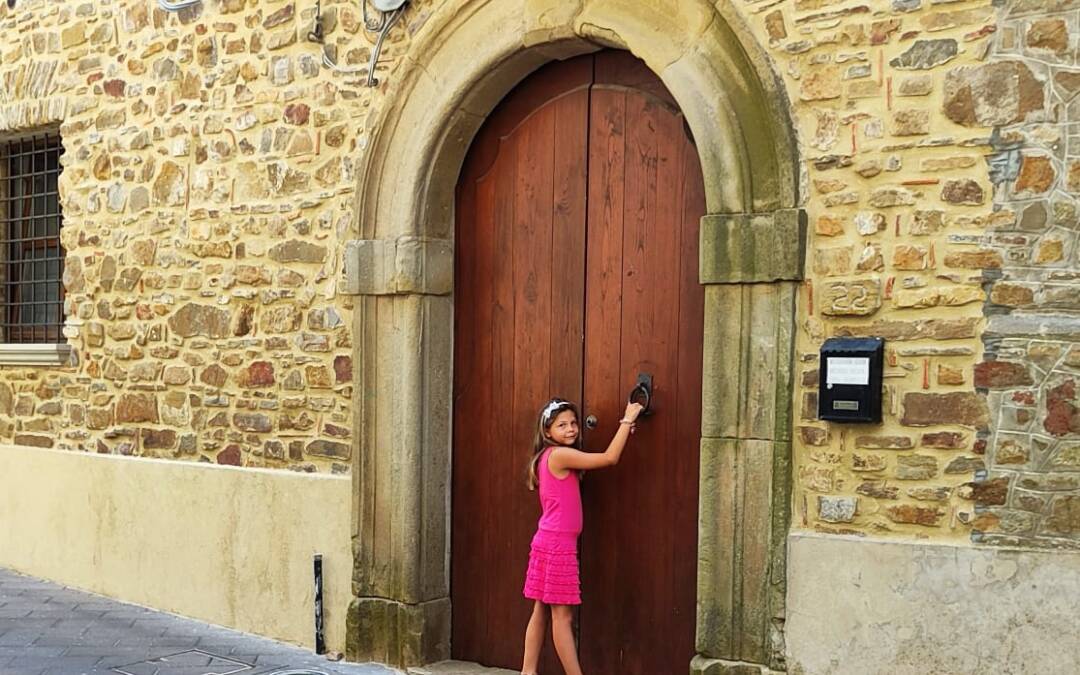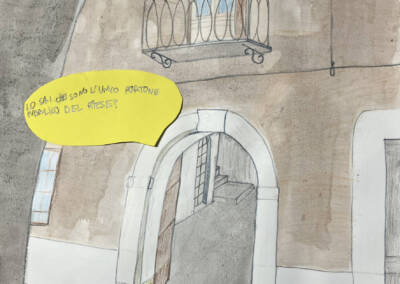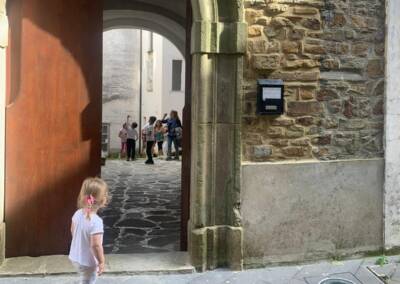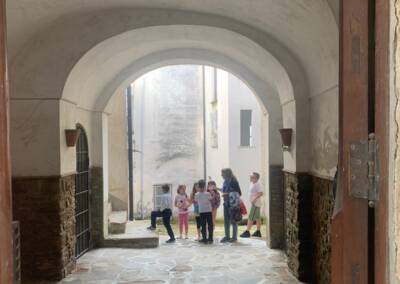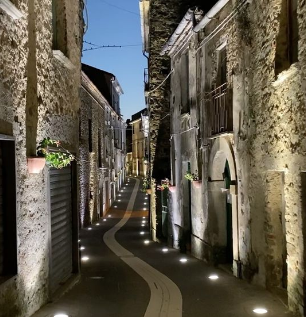“In silence we tell our story. Closed doors conceal the nostalgia of times gone by, but behind each door a world of emotion often opens up, a reminder of the warmth of memories that stand the test of time.”
Hello! I am the ‘Portone nel Corso‘ and mark the entrance to a large house built in 1600 with stones from the local quarries. The balconies and windows of the large house of which I am a part overlook Corso Umberto I, the main street of Orria, which leads to the Church of San Felice Martire, the patron saint of this enchanting town.
In Orria, majestic gates stand like authentic sentinels, giving the environment a mysterious and enveloping atmosphere. In the past, as today, these imposing wooden guardians jealously preserved access to private properties, remaining firmly closed and preserving the magic of secret spaces. This exclusive character manifests itself beyond their thresholds, revealing an intriguing and fascinating world waiting to be discovered.
As for me, the narrative takes a different turn: I acted as a gateway to several properties and was perceived as an authentic public courtyard. This welcoming space became the community’s beating heart. In this place, children could play, shepherds shelter their sheep on rainy days, and hawkers offer their services or goods. I remember the knife-grinder and the craftsman repairing copper pots, a living theatre of interactions and connections, transforming the simple act of stepping through that door into a shared experience full of life, unique stories, and a world to explore.
I have witnessed many people passing through this courtyard, many of whom have called this home their refuge. I vividly remember a small room on the ground floor, once animated by the shoemaker’s workshop, also known as the cobbler. This craftsman was dedicated to repairing shoes and creating custom-made shoes for the villagers, works of extraordinary beauty. The image of him, seated on a straw chair, wearing a leather apron, as he skilfully pulled strings, punched holes in leather, sewed and nailed, creating authentic works of craftsmanship, remains etched in my memory.
I fondly cherish the memory of the many families who made this home their refuge over time. The melodies sung by Felice still resonate in my memory, his deep, warm voice echoing so much that others called him Claudio Villa.
In addition to the daily succession of their lives, every evening, they met in a harmonious symphony of voices between notes sung with joy, laughter echoing through the walls, and the sound of conversations; the courtyard became the magical place where the sunset-sanctioned the ritual of evening recollection. A community that found sharing the sun a way of celebrating life and the beauty of relationships.
Musical and theatrical performances often flourished from sharing and creativity, transforming the courtyard into an authentic popular theatre, where each performance became a celebration of community.
Today, the dwelling I am a part of is owned by Nicole Worbs, a German gentleman who initially came to accompany a friend and fell in love with the place, turning it into his regenerating oasis. With love, he lovingly restored part of the house to its former glory and returned it to the town’s historical context.
Corso Umberto I, in fact, envelops visitors in an evocative atmosphere because its proudly preserved antiquities and features become the entrance to an exciting journey through time. Suppose one lingers in silence with an ounce of imagination. In that case, it is possible to evoke the echoes of voices from the past, transforming the experience into an enthralling embrace of history, an immersion in the beating heart of distant eras.
My story is revealed through Raffaella, who resides inside the Portone with Samantha, her mother; Simone, her little brother; and Marilena, her grandmother. She passionately conducted this research at 8 and decided to represent me with this beautiful drawing.
Author: RAFFAELLA SICA (8 YEARS OLD)
Text revision and coordination WigWam Participatory Workshop: Domenica and Ornella Mastrogiovanni

